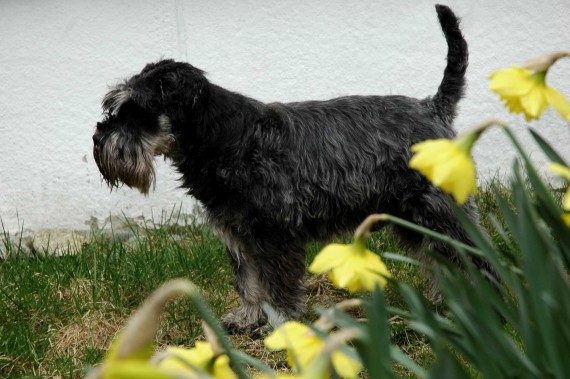What is canine osteoarthritis?
 Osteoarthritis, also known as degenerative joint disease, is one type of arthritis that affects many pets during their lives. Signs of joint disease will usually appear during the later years of your pet’s life but some may develop it earlier. Joint disease is more commonly found in dogs than in other pets, with larger breeds being more susceptible to arthritis than smaller ones. This is because dogs enjoy a higher level of exercise and larger breeds are more likely to develop arthritis due to their size.
Osteoarthritis, also known as degenerative joint disease, is one type of arthritis that affects many pets during their lives. Signs of joint disease will usually appear during the later years of your pet’s life but some may develop it earlier. Joint disease is more commonly found in dogs than in other pets, with larger breeds being more susceptible to arthritis than smaller ones. This is because dogs enjoy a higher level of exercise and larger breeds are more likely to develop arthritis due to their size.
It can be extremely difficult for owners to spot the subtle symptoms of canine arthritis but the most common signs are:
- lameness or stiffness
- limping or favouring a limb
- joint swelling
- inability to get up
- reluctance to jump or climb stairs
- grating sounds from joints
- noticeable pain or discomfort
You are most likely to notice stiffness when your dog tries to get up a day after strenuous exercise. Stiffness usually develops during periods of rest and the symptoms may initially only be present for a few minutes at a time. However, as the condition progresses the effects of stiffness or lameness will become more severe or more prolonged and if left untreated, can lead to permanent lameness.
Supporting tissue around a joint can become thicker over time. This build-up of scar tissue will make the joint stiffer, reduce the range of motion and the joint may become visibly swollen. Osteoarthritis often effects both knees or both elbows so it is sometimes not possible to compare them in order to discern any swollenness.
Grating in the joint (or crepitus) is a noise caused by irregular bone or cartilage surfaces rubbing together. As the osteoarthritis condition progresses the grating noise will become more apparent and frequent. Loud grating sounds will usually be causing a degree of discomfort to your pet. In these cases consulting your veterinary surgeon is advisable.
Osteoarthritis is often connected to other problems in the same joint such as hip dysplasia, ligament damage or elbow dysplasia. If the symptoms start to become a problem for your dog it is best to contact your vet who can perform tests to diagnose the problem. Your vet will then suggest some preventative action which may include reducing the dog’s daily routine and seeing a canine physiotherapist to help relieve the pain and providing you with a rehabilitation programme. The aim of these steps is to improve your dog’s quality of life and to ensure they are as comfortable as possible.
For more information on relieving your dog’s arthritic pain please read our article on dog physiotherapy.